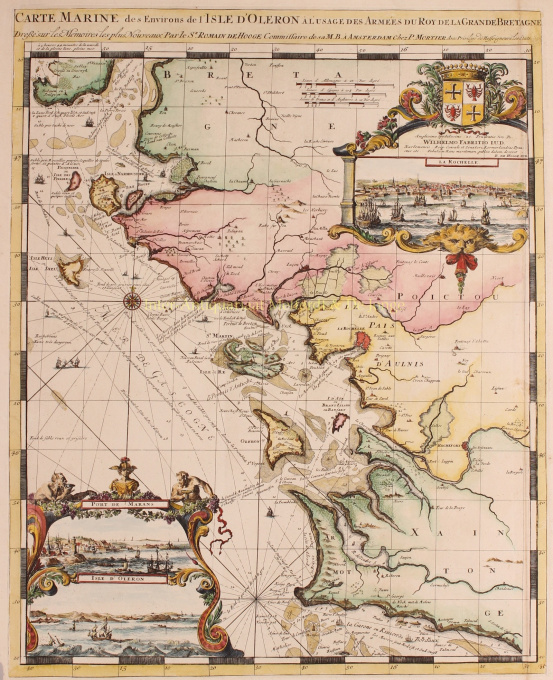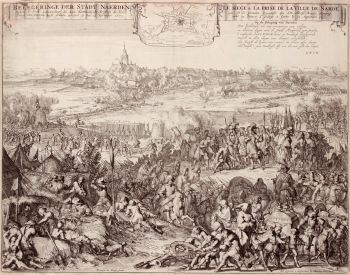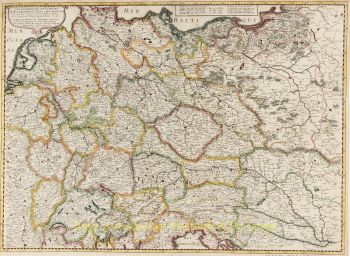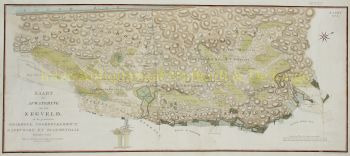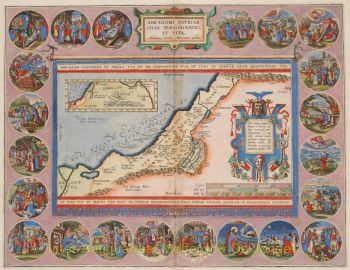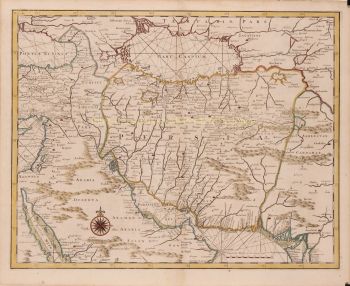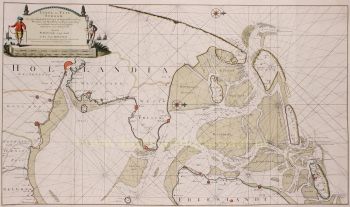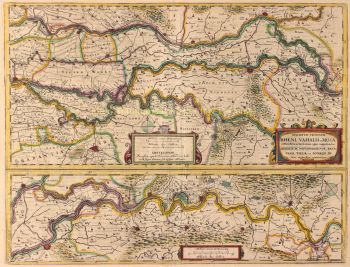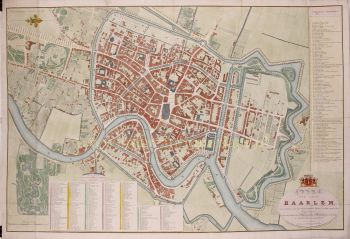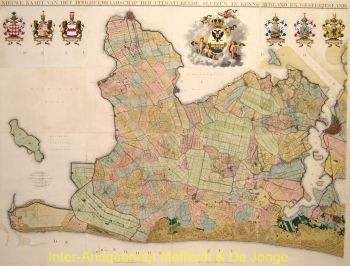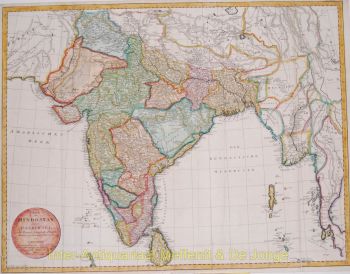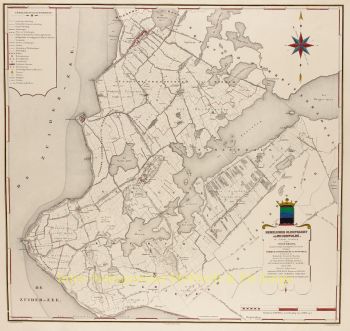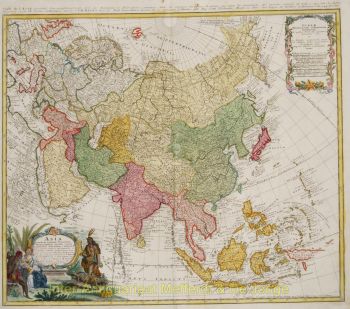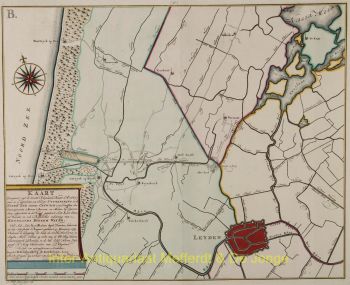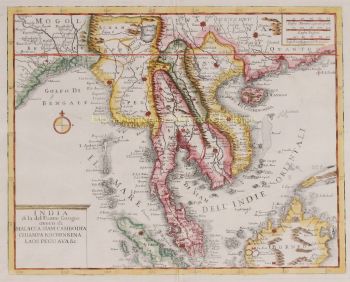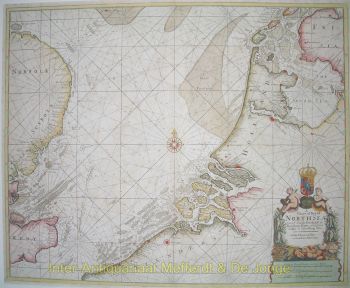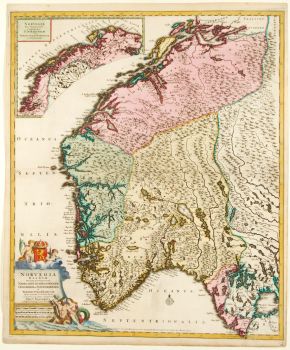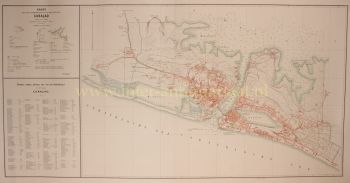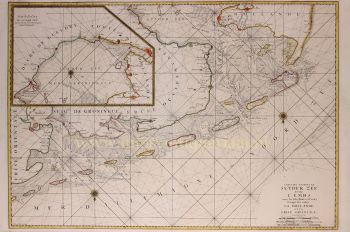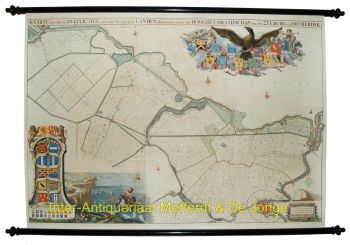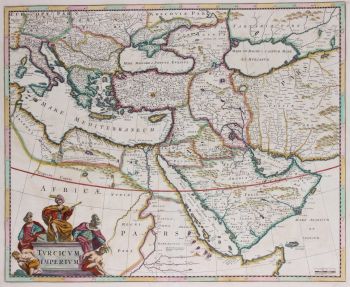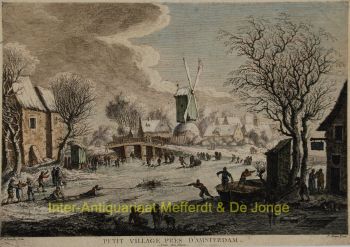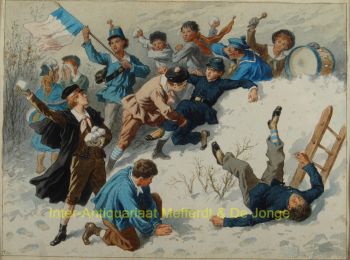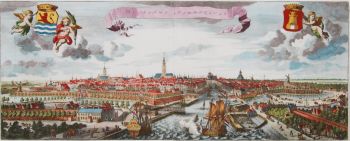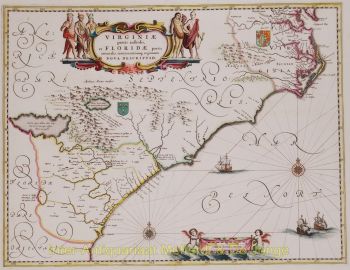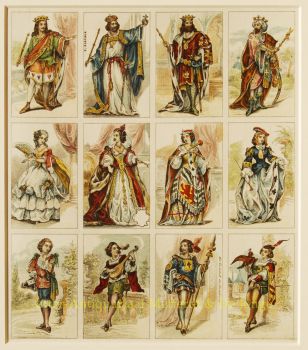França- Charente-Maritime 1693
Romeijn de Hooghe
€ 1.350
Inter-Antiquariaat Mefferdt & De Jonge
- Sobre arte
BEAUTIFUL CHART OF THE FRENCH ATLANTIC COAST "Carte Marine des Environs de l’Isle d’Oleron", copper engraving made by Romeijn de Hooghe and published by Pieter Mortier of Amsterdam in 1693. Coloured by a later hand. Size: 59 x 48 cm. Elaborately etched and engraved chart of the French Atlantic of the coast off nowaday Charente-Maritime, extending from the Gironde Estuary in the South to the mouth of the Loire and Brittany (Bretagne) in the North, centered on the Pertuis d'Antioche strait with Îsle de Ré and La Rochelle. With a history of invading English, Îsle de Ré’s main port Saint-Martin was fortified in 1681 as a component of the belt of forts and citadels built to protect the military harbour of Rochefort (on the river Charente). With large inset views of La Rochelle, the port Marans and the island of Oléron, along with a decorative cartouche and dedication coat of arms. The Gironde is subject to very strong tidal currents, still today great care is needed when navigating the estuary. The lighttower of Cordouan stands at its entrance, already in 1694. Throughout the map there is detailed navigational information, such as currents, tides, the nature of the seabed, the harbours and indications of the water depths, reefs, shoals and sandbanks. The map is from the “Cartes marines a l'usage des armées du Roy de la Grande Bretagne”, the second part of the “Neptune François”, in which charts are larger and more lavishly decorated than those of any preceding book of this kind. This magnificent work was intended more as a show piece than something to be used by pilots at sea. (According to Cor Koeman it is “the most expensive sea-atlas ever published in Amsterdam in the seventeenth century”.) This part of the atlas, which contains nine charts, constitutes "the most spectacular type of maritime cartography”. It was prepared for the use of William III who needed accurate information on the Channel coasts for his war plans against Louis XIV of France. In 1694 he sent an expedition to attack several of the ports which are illustrated in the etched vignettes that decorate these charts. What has won their lasting fame, however, is the identity of their author: the artist-engraver Romeijn de Hooghe (1645-1708). Since he undertook all stages of production himself, the charts exhibit a rare harmony of design and execution. The allegorical subjects which characterise his designs are here transformed into dramatic cartouches. Price: Euro 1.350,-
- Sobre artista
Romeyn de Hooghe (1645, Amsterdam - 1708, Haarlem) foi um gravador, desenhista de gravuras, pintor, escultor, ourives, medalhista, advogado, editor de mapas e autor de escritos históricos. Em 1673, Romeyn casou-se com Maria Lansman, filha de um ministro. Eles moravam em Amsterdã no Reguliersgracht. Ele ilustrou livros, por exemplo, Hieroglyphica of Merkbeelden der oude volkeren (1735), um livro de emblemas bem conhecido e livro de referência para a mitologia clássica e sua iconografia. Ele também ilustrou livros de Constantijn Huygens e Hugo de Groot. Em 1675, ele possuía uma loja de arte na Kalverstraat. Em 1677, ele ilustrou a viagem de Coenraad van Klenck a Moscou. Ele produziu muitas gravuras, entre outros os fogos de artifício no Hofvijver em Haia. Uma série de gravuras de De Hooghe foram reprovadas por algumas pessoas, uma vez que mostrariam assuntos vergonhosos. Por outro lado, era considerado um grande satírico gráfico. De Hooghe era um propagandista da política anti-francesa. Ele pintou grandes painéis para as salas do gabinete do prefeito em Enkhuizen. Em 1690 mudou-se para Haarlem, onde iniciou aulas de desenho de padrões para crianças no Nieuwe Gracht 13.
Você está interessado em comprar esta obra de arte?
Artwork details
Related artworks
- 1 - 4 / 24
- 1 - 4 / 12

